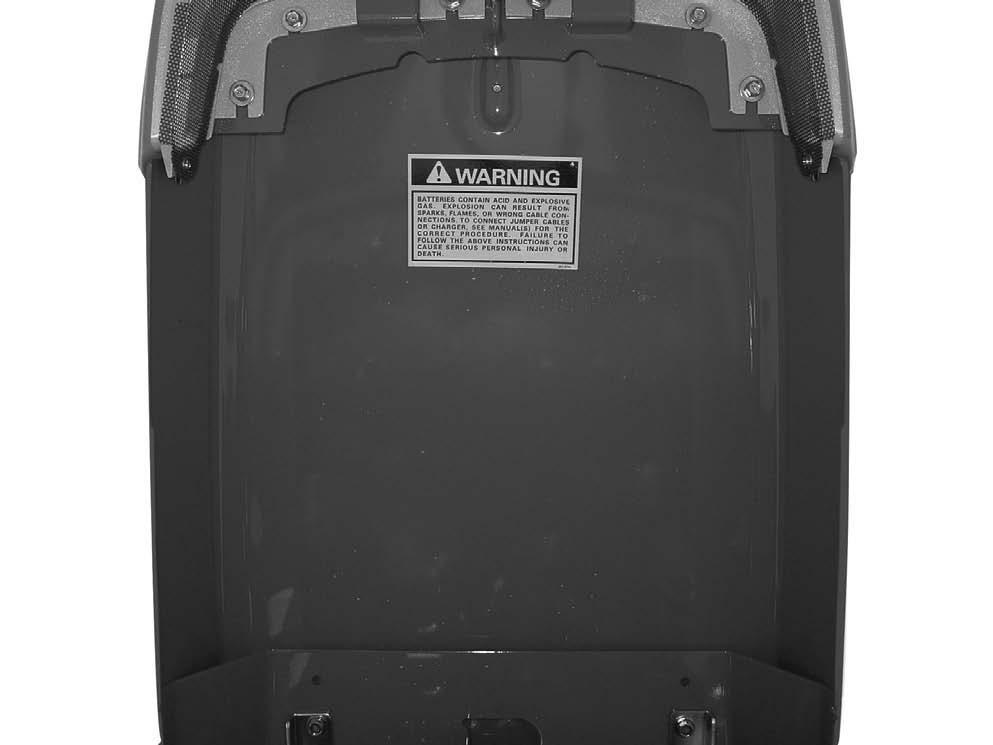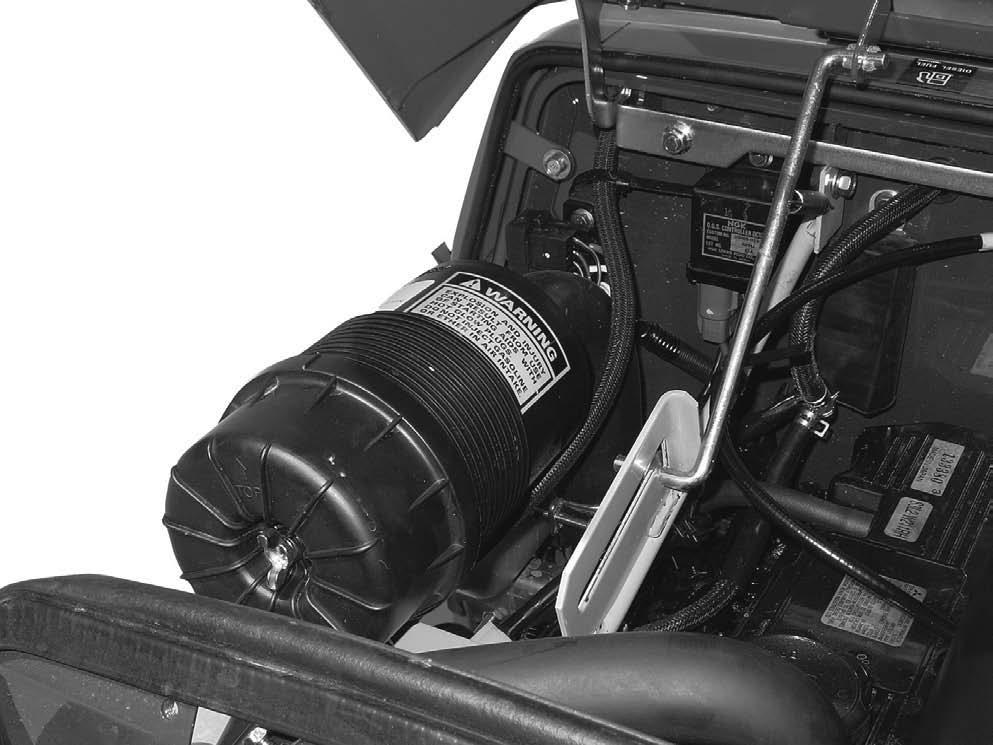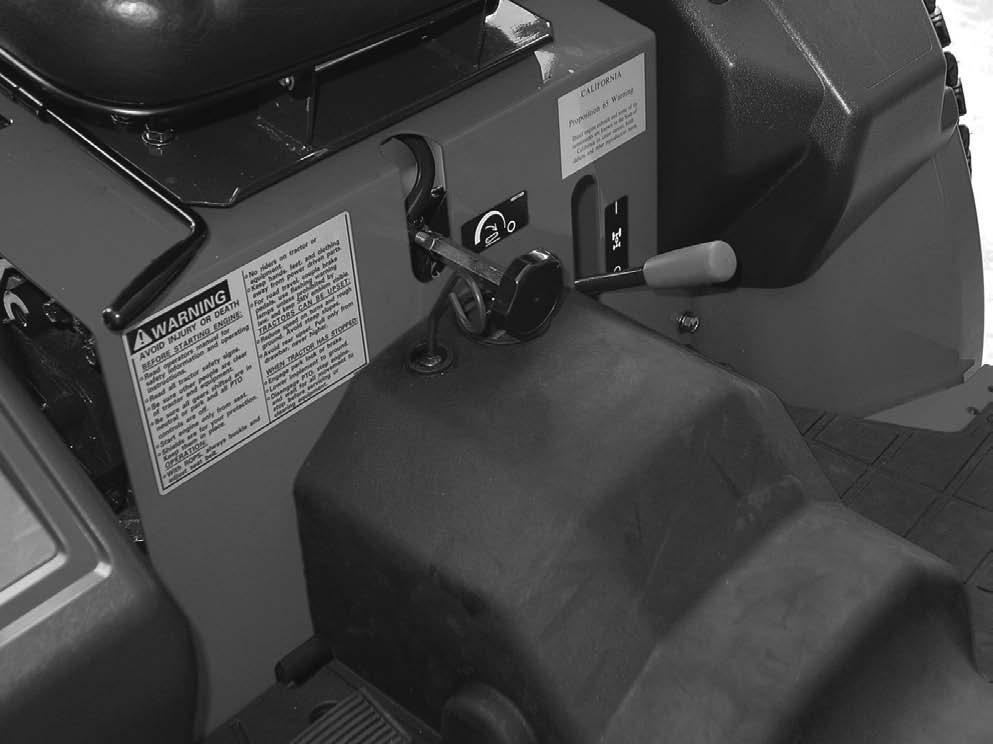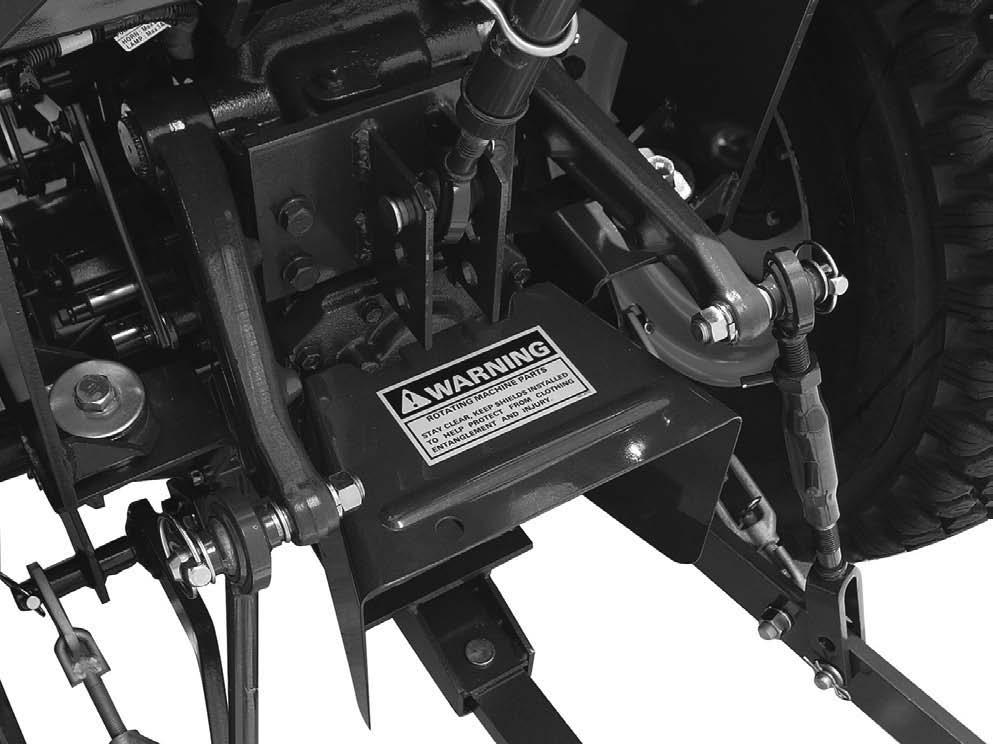
5 minute read
SAFETY PRECAUTIONS
REMEMBER: "SAFETY" IS ONLY A WORD UNTIL IT IS PUT INTO PRACTICE
Improper handling of the tractor could cause an accident. Prior to the operation of the tractor, be sure to read this Manual carefully and have a through understanding of all of the contents. In particular, the instructions given in this section entitled "Safety Precautions" must be strictly followed.
A. GENERAL OPERATING SAFETY PRECAUTION
1. Observe all the safety precautions in this manual when operating the tractor.
2. Operate the tractor while wearing tight clothing that allows easy movement. Avoid loose jackets, mufflers, ties, scarves, or loose shirt sleeves to prevent from being caught by moving parts.
5. Never allows riders on the tractor, linkage drawbar or attachment while traveling and operating them.
3. A lways work when you are in good physical condition by taking sufficient rest to avoid overwork.
4. D o not allow children or adults having no knowledge of the tractor or tractor operation, to operate the tractor.
B. BASIC SAFETY REQUIREMENTS FOR MAINTENANCE
Always follow these maintenance instructions before operating the tractor: a) I f the diluted sulphuric acid from the battery has gotten into the eyes: Clean the eyes with a lot of clean running water for more than 15 minutes, while opening the eyes widely, and see a doctor immediately for proper treatment. b) If the diluted sulphuric acid from the battery has been swallowed: Rinse the mouth with clean water immediately, and see a doctor immediately for proper treatment. c) If diluted sulphuric acid has gotten on the skin of clothing: Wash away the diluted euphoric acid completely with a lot of clean running water and neutralize with soap solution. Then rinse with water. d) If the diluted sulphuric acid is spilled: Wash away with a lot of water or neutralize with slacked lime or bicarbonate of soda. a) Removal of the propeller shaft between PTO and any attachment. b) Adjustment of PTO drive train and hitch. c) A djustment or cleaning of PTO driven attachment.
1. Immediately repair the head lights and work lamps required to conform to traffic regulations where the tractor is operated.
2. K eep tractor steps clean to avoid accidents due to slippage.
3. Cover the PTO shaft with a guard when not using.
4. Be sure to engage the brake and lower any attachment or implement before disassembling any part.
5. Never adjust or service the tractor when it is in motion or while the engine is running. Always adjust the brake or clutch properly in accordance with the adjusting procedure in the instruction book.
6. Do not remove the radiator cap while the engine is running. Shut down the engine and wait until it cools sufficiently. For removal, turn the cap to the first stop to relieve pressure. To replace the coolant, use the coolant recovery tank.
7. Hydraulic oil or fuel escaping under pressure can penetrate the skin, causing serious injury. Before disconnecting oil or fuel lines, be sure to relieve all pressure. Before restoring pressure after repair, be sure all connections are tight and all hydraulic components are in normal condition. If injured by leaked fluid, see a doctor immediately for proper treatment.
8. When refueling, be particularly careful first to stop the engine completely to prevent the fuel from igniting. Never refuel in the presence of an open flame or while smoking.
9. Before starting any work on electrical equipment or work that may cause you to touch the electrical parts accidentally, first disconnect the battery cables. Never remove the rubber cap cover at the positive terminal of the battery cable end. Before connecting the battery to the charger, make sure that the charger switch is in "OFF" position. Be sure to connect the charger to the correct terminals on the battery (positive to positive, negative to negative). A great amount of hydrogen gas is generated by the battery when it is being charged. Take precautions against fire: Do not have any exposed flame in the area where you are working. Be sure not to cause any leakage of the electrolyte, since it will corrode the skin or clothing. In case of accident as described below, immediately seek first aid, and see a doctor immediately for proper treatment.
10. Stop the engine and make sure the PTO shift lever is in Neutral before performing any of the following services, including.
11.The steering wheel always has built-in play to some extent, which is required for smooth meshing of sector gear and pinion gear.
Always inspect the amount of the play. Do not operate the tractor if there is too much or too little play in the steering.
C. OPERATION OF THE TRACTOR
Before driving the tractor, follow these rules:
1. Before starting and Driving the Tractor
Operate the tractor only when seated properly in operator’s seat and keep a firm grip on the steering wheel at all times. Never attempt to perform any operation of the tractor from anywhere else, on or off the tractor. Always wear a "hard hat" when operating the tractor.
2. Starting and Driving the Tractor
Always operate the tractor at the proper speeds which enable you to keep the tractor in complete control.
To start traveling, lower the engine speed and release the clutch pedal slowly. Before leaving the tractor, stop the engine, remove the key, apply the parking brake and make sure that the engine has come to a complete stop, and any attachment is completely touching the ground.
Slow down when operating the tractor on rough round.
When starting the engine in an enclosed area or building, ensure proper ventilation by opening the doors and/or windows to prevent carbon monoxide inhalation. Mount the extension exhaust pipe on the tractor which has a cabin.
Never attempt to jump on or off from moving tractor.
When starting the tractor, operating any attachment or engaging the PTO, make sure that no one is in the way, especially children.
3. Traveling on Roads and Streets
For traveling on roads and streets, be sure to lock both brake pedals together before driving to prevent either brake from acting independently.
4. Steering and Turning the Tractor
Slow down your tractor and disengage the differential lock before going into a turn, being careful to prevent any attachments mounted on the front or rear from hitting anyone or anything.
5. Towing and Operating on Hills
For towing work on downward slope, place the shift lever in low speed and use engine brake.
Never try to reduce the speed with brake only.
Never operate the differential lock while driving at high speed or traveling on the road. For driving the MFD tractor on the road, be sure to place the MFD shift lever in OFF position.
Towing a heavy object on a hill is highly hazardous. Widen the tread of the tractor and mount the wheel weight or chassis weight to increase the stability and operate with extra precaution.
When operating the tractor on either a steep slope or flat ground, be sure not to suddenly steer, brake, clutch or operate attachments.
Do not operate the tractor at the edge of cliff or slope. Be particularly careful right after the rain when soil is soft and may give way easily.
Avoid operating the tractor on an extreme slope that appears hazardous, when forced to operate on such slope, use extra care. Driving forward out of a ditch or mired condition or up a steep slope could cause tractor to tip over rearward. Back out of such situation does not permit you back out, use the front wheel weight or the chassis weight for balancing the tractor lengthwise. Also in case any extraheavy rear mounting. Attachments is used, try to obtain better balance in this manner.
6. Using Attachment
To mount or operate attachment, follow the instruction manual for the particular attachment for safe operation.
For towing, be sure to use the drawbar only. Set the hitch point below the center line of the rear axle. When using a chain, never try to move forward abruptly.
When using agricultural chemicals with an attachment on the tractor, always follow the instructions in the manual for the attachment as well as the instructions provided by the chemical manufacturer.
Decals
IMPORTANT: Install new decals if the old decals are destroyed, lost, painted over or can not be read. When parts are replaced that have decals, make sure you install a new decal with each new part.
NOTE: New decals are available from your Dealer.













